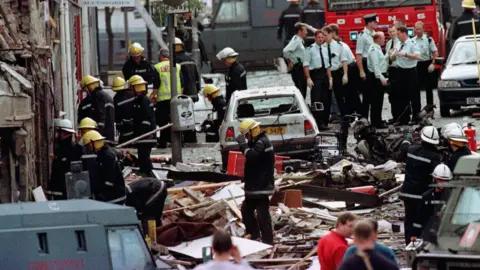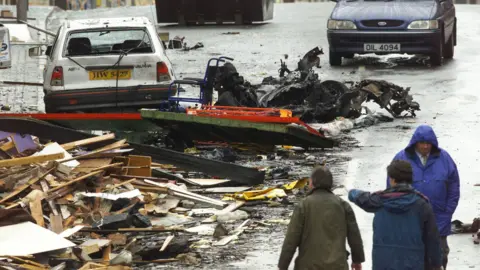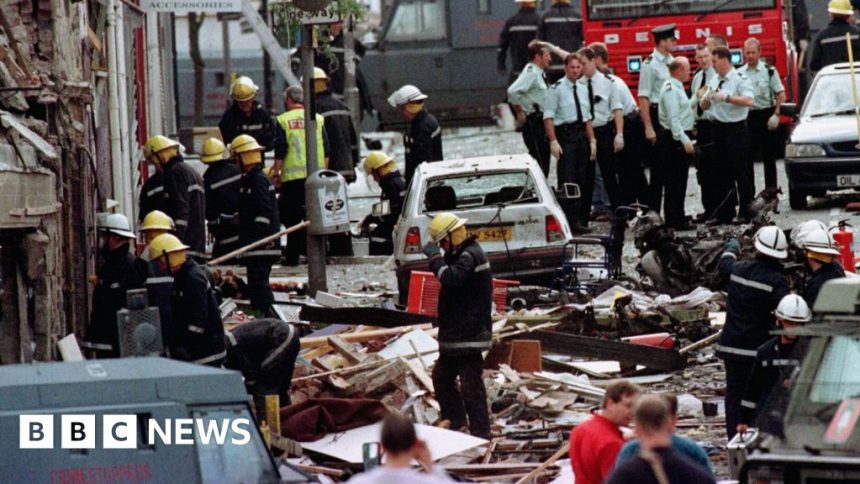Omagh bomb inquiry to hold first hearing
 PA Media
PA MediaThe public inquiry into the Omagh bombing is set to hold its first hearing on Tuesday.
Its chairman Lord Alan Turnbull is likely to set out the inquiry’s direction during a day of proceedings in the County Tyrone town.
Twenty-nine people, including a woman expecting twins, were murdered in the Real IRA attack on 15 August 1998.
The inquiry will examine whether steps could have been taken to prevent the bombing, which was the the biggest single atrocity of the Troubles.
It was established last year, following a long legal battle by some victims’ families.
Michael Gallagher, whose son Aiden was one of those killed, said the inquiry had been an “unbelievably long time coming”.
He added the atrocity was “the single worst failure of security and intelligence in the history of the state”.
Preliminary session being held
Bereaved families and survivors are likely to attend the public hearing at the Strule Arts Centre in the town.
It is described as a preliminary session to deal with procedural issues.
No witnesses will be called or evidence heard until next year.
 PA Media
PA MediaPart of the inquiry’s remit will be to establish if security measures could have disrupted dissident activities in the run-up to the bombing.
It will also evaluate the intelligence picture.
But it is not its purpose to identify the individuals responsible.
The attack was mounted from the Republic of Ireland and the Irish government has promised to assist the inquiry.
However, it has rebuffed a call for a separate or joint public inquiry.
The South East Fermanagh Foundation (SEFF), a group which helps some Omagh victims, has questioned Dublin’s approach.
Its director, Kenny Donaldson, said: “The Irish government could pass legislation which would provide Lord Turnbull with the ability to hold inquiry sessions in Dublin.
“He could be afforded the power to compel witnesses, to summons them to attend and to produce documents.
“Neither the Taoiseach (Irish PM) nor the Tánaiste (Irish deputy PM) can enforce key individuals to do so.
“An inquiry into Omagh which fails to have the ability to compel and summons witnesses from both sides of our border will not achieve an honourable and just outcome.”
What was the 1998 Omagh bombing?
On 15 August 1998 – just months after the signing of the Good Friday Agreement – a large car bomb exploded in the town’s main street during peak Saturday shopping.
More than 200 people are injured in the blast, and a further 29 people died as a result.
Among the deceased were three generations of the same family.
The three women from Augher, County Tyrone were a 65-year-old, her 30-year-old daughter, who was heavily pregnant, and her 18-month-old toddler.
 Reuters
ReutersThree days after the attack, the Real IRA claimed responsibility.
The recently formed dissident republic group said its targets were “commercial” and apologised to “civilian” victims.
No one has ever been convicted for the bombing, however, Real IRA leader Michael McKevitt was found responsible in a 2009 civil case.
Three other men, Liam Campbell, Colm Murphy and Seamus Daly were also found liable for the attack.






